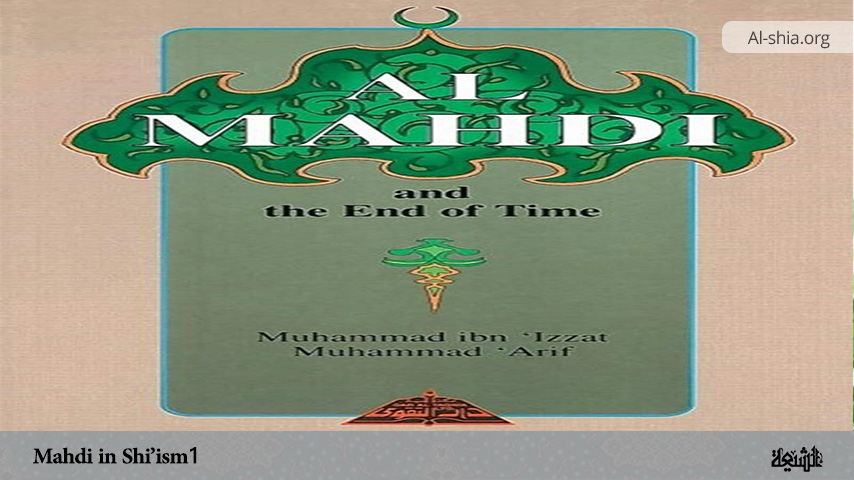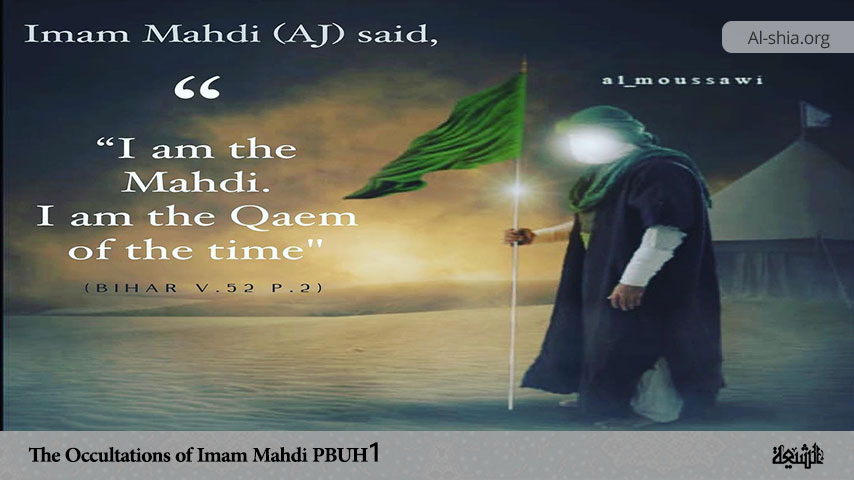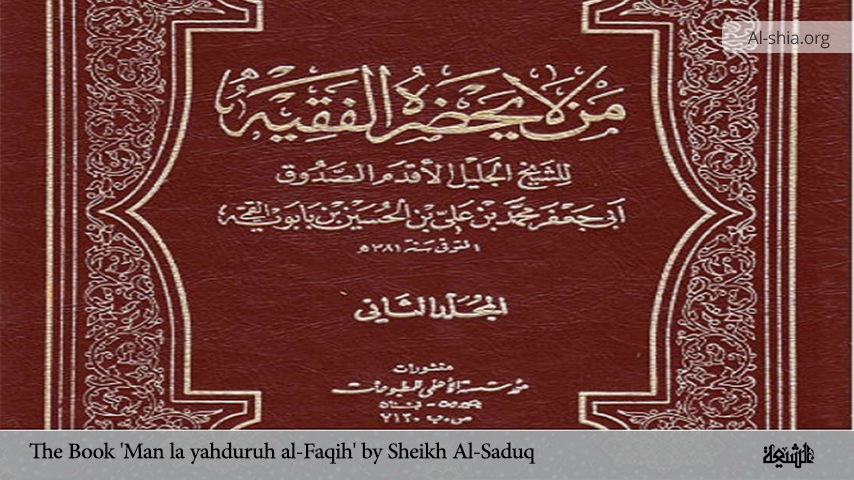In Imamite (Twelver) Shi’ism, the belief in the appearance of the Mahdi, the twelfth Imam descended from the Prophet who promised an end to corruption, has been a central aspect of the faith throughout its history, in contrast to the beliefs of Sunnism. This is not only a basic tenet of the creed but also the foundation on which the entire spiritual edifice of the Imamite religion rests. The belief in a temporary absence or occultation (ghayba) of the Mahdi and his eventual return to glory is also common.
The idea of the Mahdi has a greater significance and presence in the lives of the Shi’ites than in any other religion and is the most important factor in the development of Shi’ism, where unshakeable belief in the advent of the Mahdi continues to be expressed in most of their daily prayers. In the late nineteenth and early twentieth centuries, with the spread of Western-style modernism, Messianic and eschatological aspirations largely disappeared from the mainstream Sunnite discourse, although important Mahdi-st movements emerged in the mid-nineteenth century to subsist well into the twentieth century in different parts of the Islamic world.
On the other hand, in the Shi’ite world, the desire to create a true Islamic community with a Messianic deliverance was more intense than in the Sunni world. In the decade leading up to the Iranian Islamic Revolution in 1979, there were some attempts to reassess such themes as the nature of the hereafter, the coming of the Mahdi and the order he is expected to establish. Topics such as the duties of believers during the Occultation were more assertively linked to the questions of political legitimacy and clerical leadership on behalf of the Imam. There was a gradual distancing from the traditional narrative of the apocalyptic end in favour of portraying the Imam’s return as an all-embracing revolution with this-worldly causes and consequences.
According to Shari’ati, Messianism and futurism in Shi’ite Islam were the outcomes of a “synthesis between the ideals and the realities” of Islam, an ambition to restore the ideals of Ali’s just rule… To reconstruct such an idealized past, Shari’ati believed, the disinherited (mustad’afin) of the earth should strive for a “classless society” in which justice and equality will triumph over-exploitation, imperialism and tyranny. (1)
The difference between Sunnism and Shi’ism is a question of political succession and religious authority. There was the problem of the succession to the Prophet as leader of the community after his death. A small group backed Ali whom they believed to have been designated for this role by appointment (ta’yin) and testament. They became known as his ‘partisans’ (shi’ah) while the majority agreed on Abu Bakr on the assumption that the Prophet left no instructions on this matter; they gained the name of ‘The people of tradition and consensus of opinion’ (Ahl al-sunnah wa al-jama’ah). But more generally the Shi’ite of Ali, in the sense of those who backed and followed him among the Companions, already existed during the Prophet’s lifetime and there are several references to them in prophetic sayings.
Only with the death of the Prophet did they become crystallized as a group distinct from the Sunnis. (2) They follow the family and successors of the Prophet (Twelve Imams) as their source for the understanding of the Qur’anic Revelation. The Imam is the sustainer of the religious law and the guarantor of its continuation. The earth can never be devoid of the presence of the Imam, even if he be hidden or unknown. His duties are essential to rule over the community as the Prophet’s representative, to interpret religious science and law to men and to guide people in their spiritual life.
Like the Imams before him, the twelfth Imam is said to have had a miraculous birth. He was born on the fifteenth day of Sha’ban in the year 255 of the Hijrah. He came out of his mother’s womb prostrate in the attitude of prayer, pure and circumcised, raising his voice in the profession of faith (shahadah). His mother, called Narjis (Narcissus), is believed to be the grand-daughter of the Byzantine Emperor, who disguised herself as a slave girl, and was captured during a Muslim expedition against Byzantine territory. Long before her captivity, she was visited in her dreams by Fatimah, the venerable ancestress of the Imams and daughter of the Prophet, who instructed her in the Islamic faith and prepared her for the great role she was to play.
Finally, the Prophets Jesus and Muhammad, with their vicegerents Simon Peter (Shim’un) and Ali, appeared to the girl. Muhammad asked Jesus for Narjis’s hand, and Ali and Simon Peter acted as witnesses to the marriage contract. Fatimah and the Virgin Mary also came to bless the sacred marriage. From that time on, the 11th Imam, Hasan al-‘Askari, the girl’s future spouse, came to see her every night in a dream. He finally ordered her to flee her country and allow herself to be sold into slavery. (3)
Thus, the twelfth Imam’s lineage combined both royalty and prophecy. More important is the direct presence of Christianity in the popular concept and history of the Imams in Twelver Shi’ism. According to Imamite authors, none of the previous Imams had been spied upon as had the eleventh. Al-Hasan al-‘Askari attempted to hide the fact of the birth of his son from everyone but his closest friends. (4) The caliph al-Mu’tamid and his entourage, as well as the majority of the partisans of the Imams, were even convinced that the eleventh Imam had passed away (in 260 AH/874 AD) without leaving any progeny.
a) Mahdi in Shi’ite traditions
The literature dealing with the Mahdi, his birth, concealment and return are vast and complex. Sachedina states, concerning this literature, that the primary sources in the study of the doctrinal evolution of the idea of the Mahdi in Imami Shi’ism(5) can make an essential contribution to an understanding of the period in which the idea of the Hidden Mahdi became crystallized in Imamite dogma. (6) M.A.A. Moezzi explains very clearly that the Imams passed on two kinds of traditions concerning the Mahdi: the first category contained confusing information, where the name of the Mahdi is not specified and was aimed at that large group of disciples who were involved in the writing down of traditions.
In fact, the Imams prohibited the pronouncing of the latter’s name (al-nahy ‘an al-ism, al-man’ ‘an al-tasmiya) (7). According to the authors, this prohibition was maintained in effect up to at least the beginning of the minor Occultation. The second kind of tradition, aimed only at the closest of disciples, contained specific information about the identity of the Mahdi. His name was included here, except that, in order to guarantee the safety of his life, this category of traditions was only to be transmitted orally until after the beginning of the Occultation; it could be put into writing only after the life of the son of the eleventh Imam was out of danger. (8)
Continue in the next article: ( Mahdi in Shi’ism 2 )
NOTES:
______________________________________
1. Shari’ati, Expectation: a School of Protest, p. 15
2. H. Nasr, Ideals and realities of Islam, p.149
3. Ibn Babuye, Kamal al-din , Bab 41 Ma ruwi’ah al-Narjis umm al-Qa’im, vol.2, p.418-423 –and– Majlisi, Bihar al-Anwar, Kitab al-Ghayba, Bab wiladatihi wa ahwal al-ummihi, num. 12, vol. 51, pp.6-7-8.
4. Ibn Babuye , Kamal al-din , vol 1, pp.474
5. Imami (or imamate); the Shia who believe in twelve imams.
6. Sachedina, “A treatise on the Occultation…”, p.110
7. al-Kulayni , Usul, “kitab al-hujja”, bâb fi al-nahy ‘an al-ism , hadith 1 and 3, vol.1, p.332-333.
8. M.A.A. Moezzi, The Divine Guide in Early Shi’ism, p.106

















